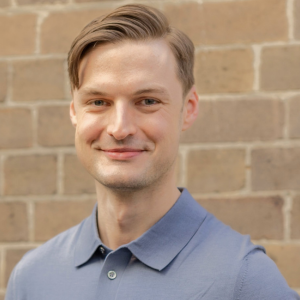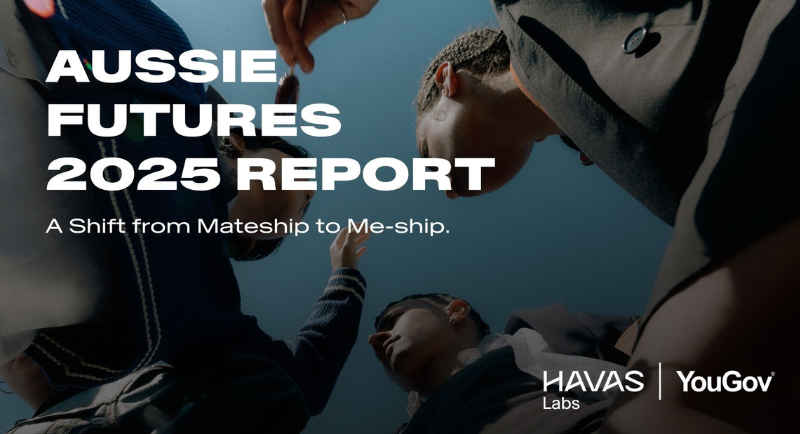Havas Australia has identified a profound shift in the nation’s values and needs and that marketers and brands should take note of as they approach consumers in its newly released Havas Labs 2025 Aussie Futures report.
Mitchell Long, chief strategy officer of Havas Media Network Australia, told Mediaweek the report is more than commentary on the nation but how marketers can apply the findings to their products and business, and how they can engage with customers in a deep and meaningful way as their needs shift and evolve.
“That’s how we’ll be taking it moving forward with different clients,” he noted of the agency’s path in light of the report.
Long said that the report shows that people are optimistic about the direction of their personal lives more than the direction of the country. He said: “The main thing that underpins the shift of ‘mateship’ to ‘me-ship’ is we’ve had five years of turmoil, people are scared, people are feeling the impact of the cost-of-living crisis more than ever before, and a heightened sense of uncertainty.”

Mitchell Long
The survey of more than 2,000 Australians, conducted by YouGov, builds on the foundations of the agency’s 2022 Aussie Values study.
Long also said that the newly released Aussie Futures report was a combined effort of the Havas village of agencies. He said: “It isn’t just about creative or message or media alone. It’s a full-marketing approach to how to tackle these needs.
“People are looking for brands to be more practical, more transparent, more action-oriented, more authentically linked with the product and service they sell, with their role in society and the world at large. I think that requires a holistic marketing effort behind it,” he added.
The seismic shift from ‘mateship’ to ‘me-ship’
In 2022, the Havas Aussie values study found that 58% of Australians said ‘mateship’ was an important value. However, the new Aussie Futures report shows 54% of Australians are now more invested in their personal futures while 34% are optimistic about the future of the nation.
“I think because there’s so many things we’re worried about that we can’t control in the world right now, Australians are thinking what can I do with my own two hands and two feet to get ahead, to get by.”
He also noted that the report found there is less of a sense of community with 23.7% of Australians indicating that community is no longer seen as a national priority. “We have seen trending over time, this rise of self-agency, individualism, charting my own path and making my own way,” Long said.
From a strategist’s point of view, Long said the shift from “mateship” to “me-ship” has big implications for how brands need to show up.
“Havas, we are all about helping brands create a meaningful difference in the world for consumers and the planet. I think to do that, you need to understand what people need, and what they want. In a climate right now where people are taking the direction of their lives into their own hands, it means that they want brands to get a lot more practical.”
He explained Australians need brands to be more supportive and play a “practical and hands-on” role in the day-to-day lives of Australians.
Meet the six segmentations
From this, the agency created segmentations based on the six core needs defining Australians right now – Support Seekers, Caring Connectors, Aspiring Altruists, Enjoyment Explorers, Progress Pioneers and Status Seekers – which Long said have “big implications of how brands need to cater to those needs.”
For Support Seekers, the report noted that 86% of them said the cost of living is the biggest challenge for them to achieve their financial aspirations and want brands to prioritise making things affordable and accessible to them.
Meanwhile, for Progress Pioneers, sustainability was highlighted as a priority for them and want brands that help fight environmental degradation.
“We haven’t had consistent policy on the environment, which means there’s even more demand for brands to step in and play a meaningful role.
“People are using their purchasing power to try and influence that in a way that they can with their wallets.”
A divided Australia
Should brands use this data and the six segmentations to position themselves as a specific solution to what those profiles need or take a broad, altruistic approach?
Long said: “I think it’s a bit of both, depending on the portion of the population you’re talking to.
“It’s not a one-size-fits-all view of Australia anymore. What we’re seeing is the divide between different groups of Australians is growing between people who have and people who have not.
“People who want to have a very outward-facing view of the world and they want to create positive change in the world, versus some people are just about their immediate family and their immediate lives and how they can enjoy that.”
He noted that it means there’s a practical offer for brands, but there’s also a meaningful role for brands to entertain people and bring joy to their lives.
“Some of us forget that in marketing we’re a force for entertainment and joy, for positivity in the world and positively shaping culture.”
Shifting needs, brand appeal and meaningful connections
For marketers and brands looking at how to implement the findings from the 2025 Aussie Futures report, Long highlighted three points to consider, starting with “understand your audience and the landscape and their shifting needs.”
He noted that the three-year gap between the 2022 Aussie Values and Aussie Futures reports is how quickly things can shift in a short space of time and how a lot of things happen.
Long added that marketers should consider what their brand appeals to. He said: “Sometimes it might be obvious for brands in categories but it’s worth considering ones you may not have thought about as it helps open up new opportunities for how brands can stand out from their competitors and tap into needs that are unmet in that category.
Round his key points, Long said brands should workshop and consider how to create a deeper meaningful connection with Australians based on the needs of those segments.
“For each of the segments we have a playbook that has comms principles which can broadly be applied in a workshop for clients to understand how to thread that through messaging, how they show up in media and how that authentically links to the product and business as a whole.”
Predictions on the next big shift
The rapid changes in the news cycle and world events highlight uncertainty. For Long, he noted that it makes it difficult to predict what the next big shift will be.
However, he believes in the continued trend of self-agency. “I think people are just trying to get on with their lives and think what can I do for myself because they recognise, they can’t rely on big institutions and governments to create dramatic change in their lives.”
